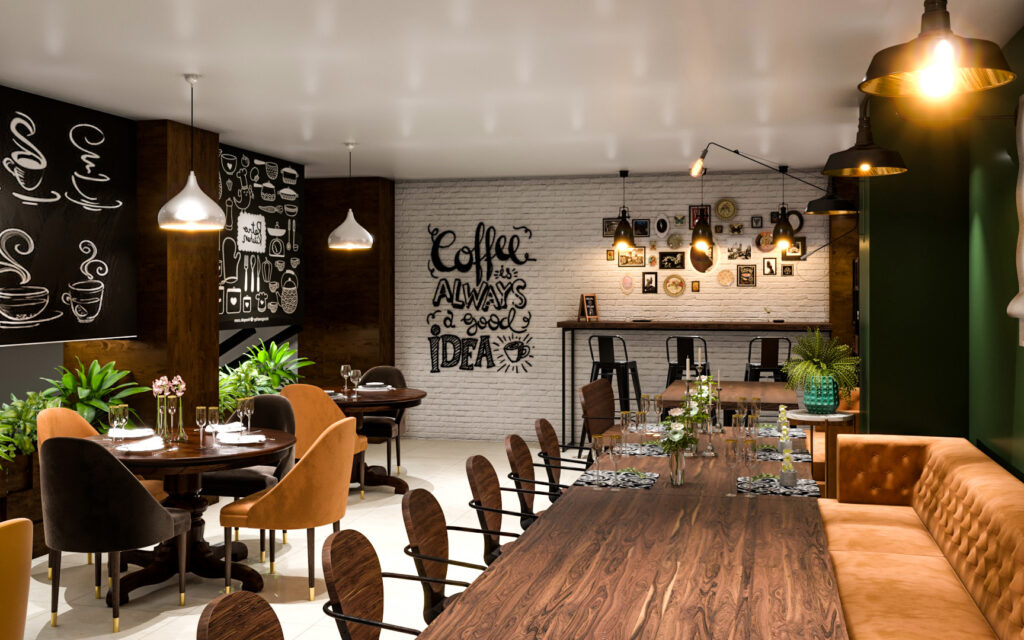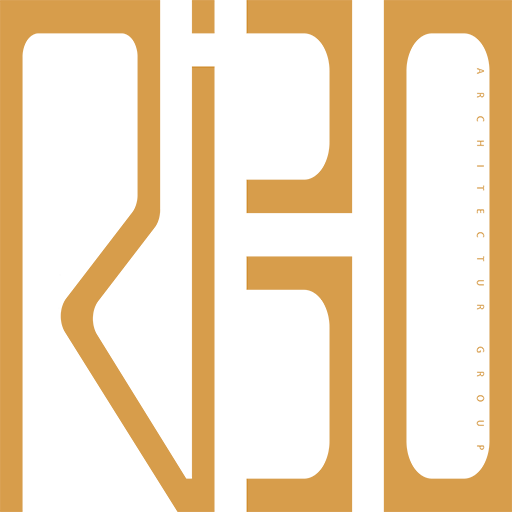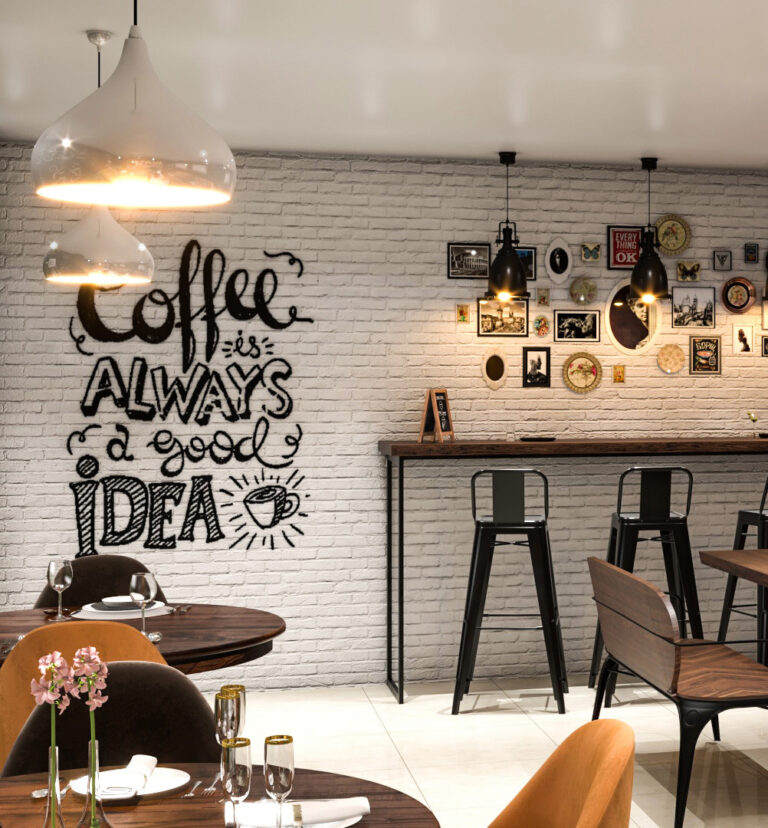
3D Design: Commercial Design 14 _ Café Project
Designing a café involves creating a welcoming and functional space that encourages customers to relax, socialize, and enjoy their time. A well-designed café is not only about aesthetic appeal but also about optimizing the flow of space, lighting, and furniture to create a comfortable and engaging environment. 3D design has become an invaluable tool in the café design process, allowing designers and clients to visualize and refine the concept before it is built.
Importance of 3D Design in Café Projects
1. Realistic Visualization:
3D design allows the visualization of the café’s interior and exterior in a realistic and immersive way. It helps to understand how different elements like furniture, lighting, colors, and materials will interact in the space, ensuring that the overall design matches the intended vision.
2. Space Optimization:
In café design, every inch of space counts. 3D design allows designers to efficiently plan seating arrangements, kitchen areas, restrooms, and storage spaces. It ensures that the space is optimized for customer comfort while meeting operational needs.
3. Client Engagement:
3D design enables clients to engage with the design process in a more interactive way. Instead of relying on 2D drawings, clients can explore the space in a virtual environment, providing valuable feedback on how the design aligns with their vision.
4. Lighting and Atmosphere Simulation:
Lighting plays a crucial role in creating the right ambiance for a café. 3D design allows for the simulation of both natural and artificial lighting, helping to determine how light will interact with different materials and elements throughout the day. This ensures the café’s atmosphere remains inviting at all times.
Benefits of 3D Design in Café Projects
1. Accurate Representation:
3D design allows for a more accurate and realistic representation of the final project, helping clients understand how the café will look and feel before construction begins.
2. Informed Decision-Making:
Clients can make better decisions about materials, furniture, lighting, and layout by visualizing the space in 3D, reducing the chances of costly changes later in the project.
3. Increased Client Satisfaction:
With 3D design, clients can better communicate their vision and see their ideas come to life, leading to higher satisfaction with the final result.
4. Improved Project Coordination:
3D models facilitate coordination between architects, interior designers, contractors, and clients, ensuring that everyone is on the same page during the design and construction phases.
Key Elements in Designing a 3D Café Project
1. Layout and Flow:
The layout of a café should be designed to maximize customer comfort and ease of movement. A well-thought-out floor plan will consider the placement of seating areas, the counter, kitchen, restrooms, and exits. 3D design allows for experimenting with various configurations to optimize the space.
2. Interior Design and Furniture Selection:
The choice of furniture, including tables, chairs, counters, and shelving, is critical in creating a café’s atmosphere. 3D design allows for experimenting with different furniture styles, arrangements, and materials to see how they fit within the space.
3. Aesthetic Appeal and Theme:
A café’s design should reflect its concept, whether it’s modern, vintage, rustic, or minimalist. In 3D design, the theme can be fully explored, from wall finishes and flooring materials to decorative elements like plants, artworks, and lighting fixtures.
4. Branding Integration:
The café design should align with the brand identity, including logos, colors, and overall style. 3D design allows for easy integration of branding elements, helping to create a cohesive and recognizable environment that reflects the café’s personality.
5. Sustainability Considerations:
Incorporating sustainable materials and energy-efficient solutions is important in modern café design. 3D design can help test eco-friendly options like recycled materials, energy-saving lighting, and water-saving appliances, ensuring that the café aligns with sustainable practices.
Steps in Designing a 3D Café Project
1. Initial Concept and Client Brief:
The design process starts with understanding the client’s vision for the café, including the desired atmosphere, target customer, and functional requirements. This includes space planning, seating capacity, and kitchen layout.
2. Creating the Basic 3D Model:
A basic 3D model is created to map out the floor plan, positioning of walls, windows, doors, and other structural elements. The layout is designed to facilitate smooth customer flow and operational efficiency.
3. Adding Details and Textures:
After the basic structure is in place, the model is enhanced with textures, furniture, and material finishes. The selection of materials like wood, metal, tiles, and upholstery is crucial in setting the tone for the café.
4. Lighting Design and Simulation:
Lighting is added to the model, and different lighting scenarios are tested to determine how it interacts with the space. Both ambient and task lighting are considered to create the right mood and ensure functionality.
5. Final Rendering and Presentation:
Once all details are added, the 3D model is rendered to create high-quality images or walkthroughs that give clients a realistic preview of the café design. This allows for adjustments to be made before finalizing the project.
6. Client Review and Adjustments:
The rendered images or virtual walkthroughs are presented to the client for feedback. Any necessary changes, whether related to furniture, color schemes, or layout, are incorporated into the final design.
Software Used in 3D Café Project Design
1. AutoCAD & Revit: For creating floor plans and 3D modeling of structural elements.
2. SketchUp: Ideal for quick 3D modeling and conceptual designs.
3. 3ds Max & V-Ray: For high-quality rendering and realistic visualizations.
4. Lumion: For real-time rendering and immersive walkthroughs.
Conclusion
3D design has transformed how café projects are planned and executed. It allows for a more immersive and interactive design process, helping designers and clients visualize the space in greater detail. From optimizing the layout and selecting furniture to testing lighting and materials, 3D design ensures that the final café space is not only aesthetically pleasing but also functional and aligned with the brand identity. Whether designing a small coffee shop or a large café, 3D design provides the tools needed to bring the vision to life with precision and clarity.


No comments yet.